
Compound (D) is :
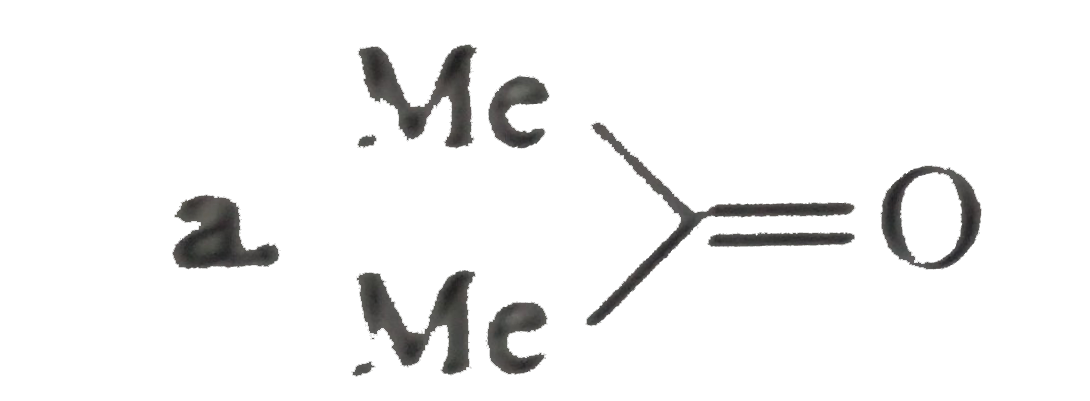
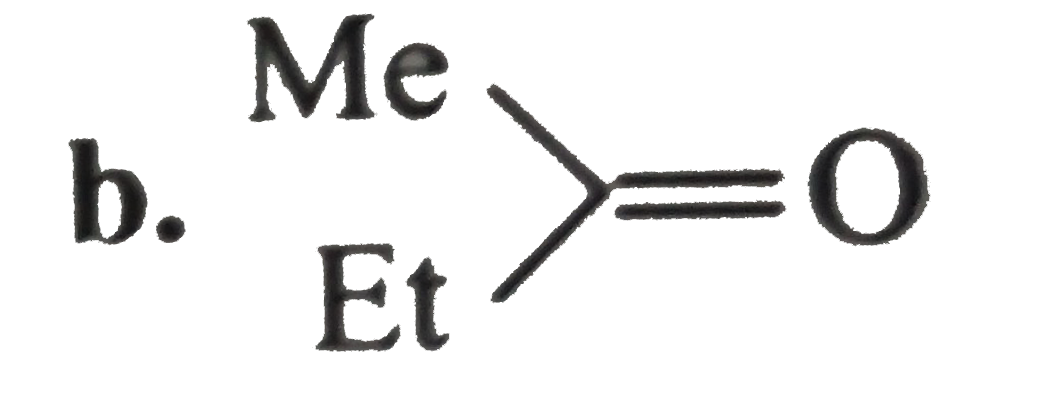
MeCHO
Et-CHO
The correct Answer is:A
(a) (i) Acetone obtained from (G) suggests that (G) is calcium acetate, (CH3COO)2Ca.
(ii) Therefore, compound (D) is acetone (Me2C=O)
(iii) Thus, compound (F) would be isopropyl alcohol (Me2CHOH).
(iv) Since (D) is obtained from (C),(C) would be 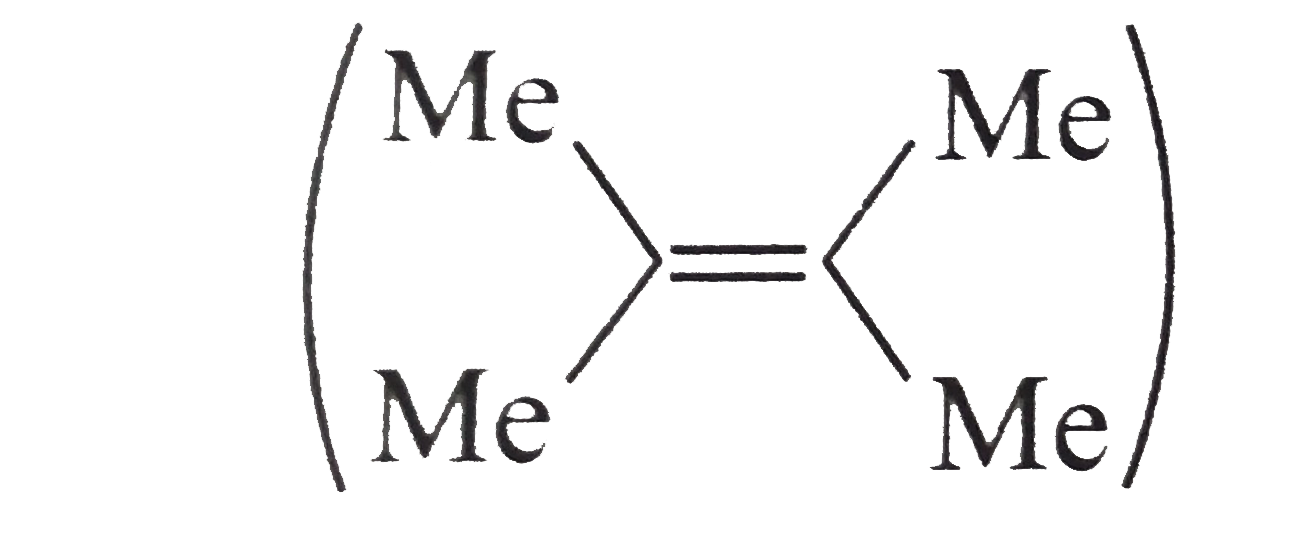
(v) (B) would be 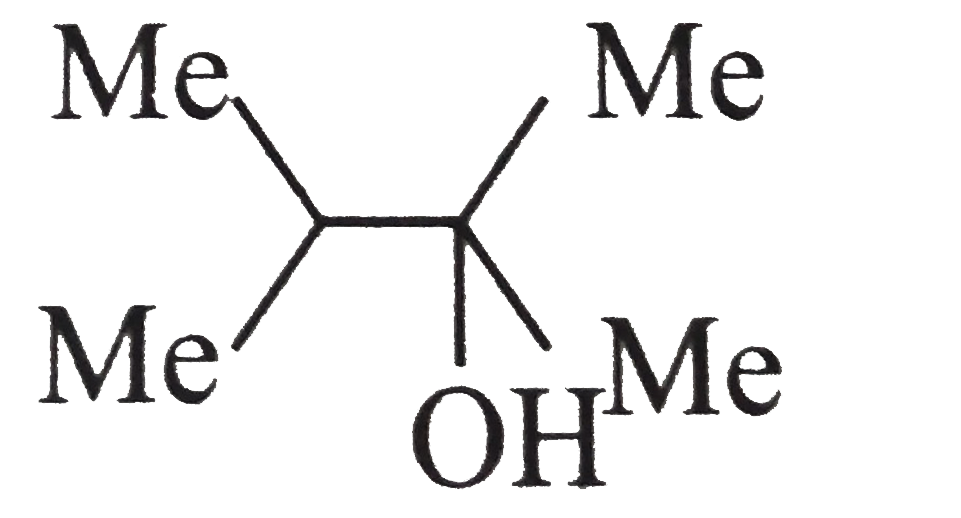
(vi) Structure of (D) and (F) suggest that ester (A) should be 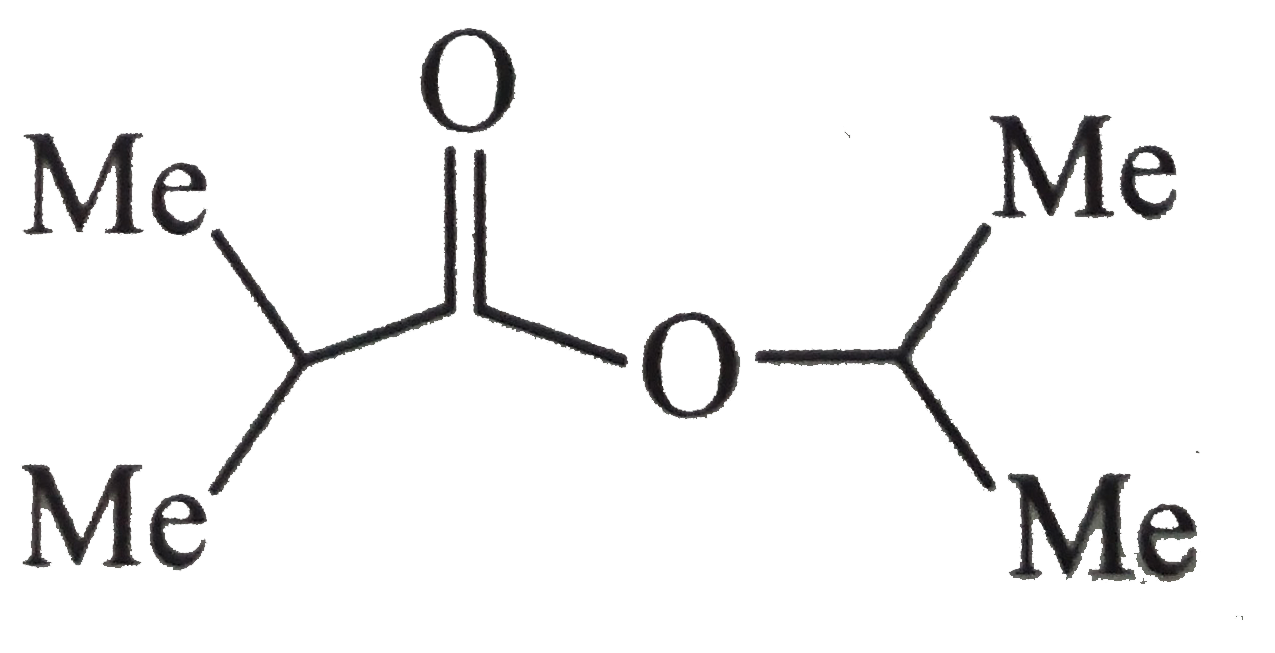 .
.
Reactions :
 .
.
Topper's Solved these Questions
- CARBOXYLIC ACIDS AND THEIR DERIVATIVESBOOK - CENGAGE CHEMISTRY ENGLISHCHAPTER - CARBOXYLIC ACIDS AND THEIR DERIVATIVESEXERCISE - Exercises (Multiple Correct)
34 Videos
- CARBOXYLIC ACIDS AND THEIR DERIVATIVESBOOK - CENGAGE CHEMISTRY ENGLISHCHAPTER - CARBOXYLIC ACIDS AND THEIR DERIVATIVESEXERCISE - Exercises (Singlecorrect)
64 Videos
- CARBOXYLIC ACIDS AND THEIR DERIVATIVESBOOK - CENGAGE CHEMISTRY ENGLISHCHAPTER - CARBOXYLIC ACIDS AND THEIR DERIVATIVESEXERCISE - Exercises (Subjective)
19 Videos
- BIOMOLECULESBOOK - CENGAGE CHEMISTRY ENGLISHCHAPTER - BIOMOLECULESEXERCISE - Exercises Archives (Analytical And Descriptive)
8 Videos
- CHEMICAL KINETICSBOOK - CENGAGE CHEMISTRY ENGLISHCHAPTER - CHEMICAL KINETICSEXERCISE - Archives Subjective
23 Videos
Similar Questions
i. Compound (A)
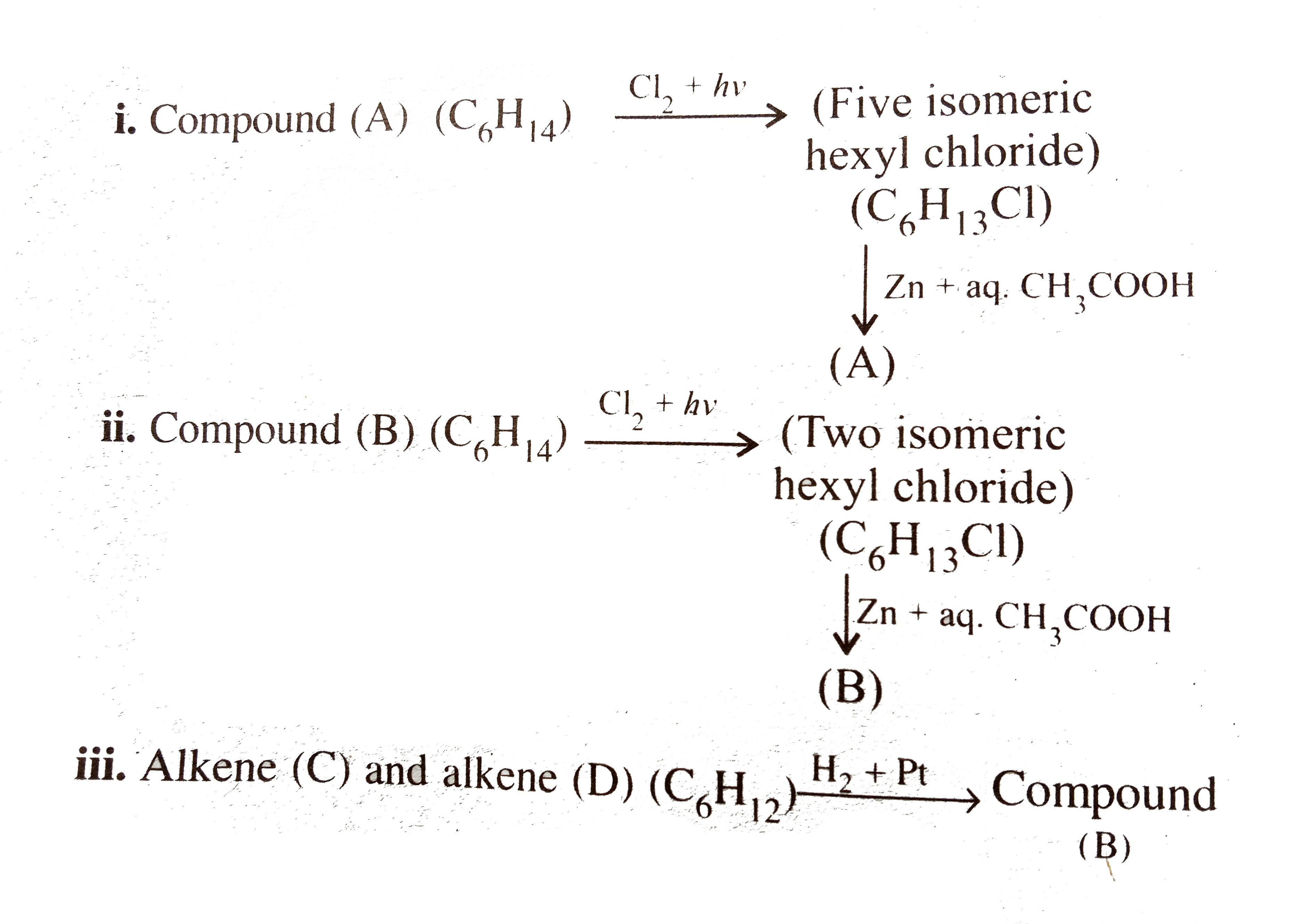
ii. Compound (B)
iii. Alkene (C) and alkane (D)
Compound (A) is:
View Solutioni. Compound (A)
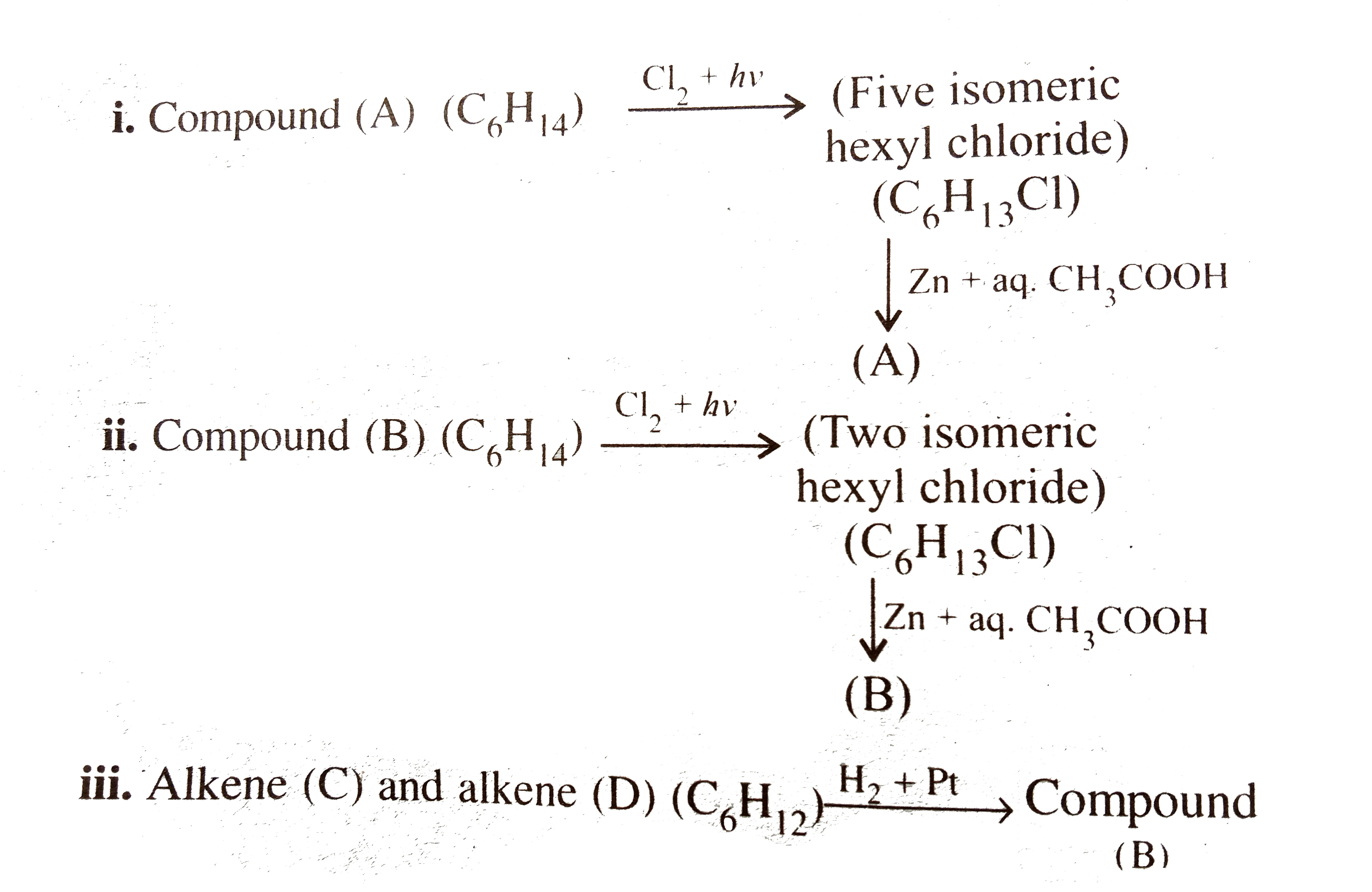
ii. Compound (B)
iii. Alkene (C) and alkane (D)
Compound (A) is:
View SolutionMatch each of the following four structures with one of the compound A-D on the basis of the following experimental facts
Compound (A),(B) and ( C ) are optically active, but compound (D) is not
Compound (C ) gives the same products as compound (D) on treatment with periodic acid, But compound (B) gives a different product.
Compound (A) does not react with periodic acid.

Compound A-D are respectively?
View SolutionWhen compound (A) is treated with conc. H2SO4, a reddish brown colour gas (B) is evolved. To this solution, a solution of (C ) is added slowly from the side of the test tube, a blue ring is obtained at the junction of two layers due to formation of (D).
Compound (D) has formula :
View SolutionAn inorganic red coloured compound (A) on heating gives a compound (B) and a gas (C). (A) on treatment with dil. HNO3 gives compound (D), brown colour substnace (E) and a neutral oxide (F). Compound (D) on warming gives off again gas (C). Then, (E) will be
View SolutionWhen an oxide of manganese (A) is fused with KOH in the presence of an oxidising agent and dissolved in water, it gives a dark green solution of compound (B). Compound (B) disproportionates in neutral or acidic (C ) oxidises potassium iodide solution to a compound (D) and compound (A) is also formed. Identify compounds A to D and also explain the reactions involved.
View SolutionA violet compound of manganese (A) decomposes on heating to liberate oxygen and compounds (B) and (C ) of manganese are formed. Compound (C ) reacts with KOH in the presence of potassium nitrate to give compound (B). On heating compound (C ) with conc. H2SO4 and NaCl, chlorine gas is liberate and a compound (D) of manganese alongwith other products is formed. Identify compounds A to D and also explain the reaction involved.
View SolutionAn organic compound (A) having V.D. = 30 contains C = 60.0% and H= 13%. On treatment with PCI5 it gave another compound (B) which contained 45.2% chlorine and on hydration it produced a hydrocarbon (C) containing 85.7% C and 14.3% hydrogen. On successive treatment with HI and moist silver oxide, (C) gave a compound (D) which was isomeric with (A). Identity (A), (B), (C) and (D) and explain the reactions.
View Solution(i) A powdered substance (A) on treatment with fusion mixture gives a green coloured compound (B). (ii) The solution of (B) in boiling water on acidification with dilute H2SO4 gives a pink coloured compound (C).
(iii) The aqueous solution of (A) on treatment with NaOH and Br2− water gives a compound (D).
(iv) A solution of (D) in conc. HNO3 on treatment with lead peroxide at boiling temperature produced a compound (E) which was of the same colour at that of (C) . Identify A,B,C,D,E
View Solution
The compounds (D) and (E) respectively are:
View Solution
